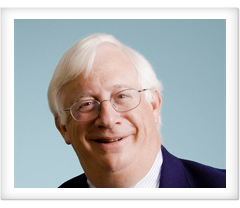| |
 Alerts & Advisories Alerts & Advisories
 Industry Reports & Newsletters Industry Reports & Newsletters
 Published Articles Published Articles
 Social Media & Blogs Social Media & Blogs
 Brochures Brochures

|
 |
Health Care Antitrust Alert
Ninth Circuit Affirms FTC’s Challenge to Hospital-Physician Group Merger, While Rejecting Efficiencies and Health Care Quality Arguments
02.11.2015
By Bruce D. Sokler, Dionne Lomax, Robert G. Kidwell, and Farrah Short
In a much anticipated appellate health care antitrust decision, the United States Court of Appeals for the Ninth Circuit upheld a district court’s finding that a consummated hospital-physician group merger violated Section 7 of the Clayton Act, despite the provider-defendants’ assertion of an efficiencies defense based on integrated care and risk-based reimbursement. St. Alphonsus Med. Ctr. – Nampa Inc. v. St. Luke’s Health System, Ltd., No. 14-35173 (9th Cir. Feb. 10, 2015). In so ruling, the Ninth Circuit created significant judicial guidance on the interplay between the antitrust laws and health care reform by limiting the viability of an efficiencies defense for proposed health care mergers and indicating that even if the efficiencies were recognized, it would be insufficient to offset the anticompetitive effect of an improper merger.
The appeal arose from a January 2014 decision by the U.S. District Court for the District of Idaho upholding the Federal Trade Commission’s (FTC) and State of Idaho’s challenge to a hospital system’s acquisition of a physician practice group, and ordering divestiture as the remedy. The case involved the $16 million acquisition by St. Luke’s Health System, Ltd. (St. Luke’s) of Saltzer Medical Group PA (Saltzer), a physician multispecialty group, the majority of whom provided primary care services in Nampa, Idaho. The transaction was consummated in December 2012, after the district court initially denied competing hospital St. Alphonsus Health System Inc.’s motion for an injunction blocking the deal. In 2013, the FTC and the Idaho Attorney General joined the suit to block the deal. Following a lengthy bench trial, the district court found for the government. In July 2014, St. Luke’s obtained a stay pending appeal from the Ninth Circuit of the district court’s order to divest Saltzer. This decision follows oral arguments held last November before a hot bench.
Reviewing the district court’s findings of fact for clear error and its conclusions of law de novo, the Ninth Circuit held that the lower court did not clearly err in: i) determining that Nampa, Idaho was the relevant geographic market; ii) finding that plaintiffs established a prima facie case that the merger would probably lead to anticompetitive effects; and iii) concluding that defendants failed to demonstrate that the efficiencies were merger-specific or that they would have a positive effect on competition.
Frequently, hospital-hospital merger cases have turned on the relevant geographic market definition. In this hospital-physician merger case, relevant geographic market was again strongly contested. Relying on the SSNIP test (whether a hypothetical monopolist could impose a small but significant nontransitory increase in price), the district court found that a hypothetical primary care physician (PCP) monopolist in Nampa could profitably impose a SSNIP on insurers. The Ninth Circuit found that this determination was supported by the record, including testimony that Nampa residents strongly prefer local PCPs, and evidence that insurers generally need local PCPs to market a health care plan. Defendants did not dispute that the relevant product market in this case was adult PCPs.
Affirming the district court’s relevant market definition, the Ninth Circuit next examined whether plaintiffs had established a prima facie case that the merger would probably lead to anticompetitive effects in that market. Focusing on the Nampa PCP market, the post-merger HHI and change in HHI fell well above the thresholds for a presumptively anticompetitive merger under the FTC/DOJ Merger Guidelines. The Ninth Circuit affirmed that the extremely high HHI on its own established plaintiffs’ prima facie case (citing FTC v. H.J. Heinz, 246 F.3d 708, 716 (D.C. Cir. 2001)). The Ninth Circuit also agreed with the lower court’s finding that post-merger St. Luke’s would likely negotiate higher reimbursement rates from insurers for PCP services, relying in part on internal correspondence indicating that defendants planned to do so.
The Ninth Circuit only diverged from the district court in concluding that the lower court’s finding that St. Luke’s would also raise prices in the hospital-based ancillary services market was not supported by the record, because there had been no findings about market power in that market.
Once plaintiffs established a prima facie case, the burden shifted to defendants to rebut the prediction of future anticompetitive effects. St. Luke’s advanced an efficiencies defense, asserting that the merger would allow it to move toward integrated care and risk-based reimbursement.
The court showed very little appetite toward embracing such defenses in a merger context generally, let alone in the health care context. The court first pointed out that the Supreme Court has never expressly approved such a defense. The Ninth Circuit also noted that although other circuits (the Sixth, D.C., Eighth, and Eleventh) and the FTC have suggested proof of post-merger efficiencies could rebut a Section 7 prima facie case, none of the reported appellate decisions have actually found such a defense to be successful. In its decision, the Ninth Circuit stated that “[w]e remain skeptical about the efficiencies defense in general and about its scope in particular. It is difficult enough in § 7 cases to predict whether a merger will have future anticompetitive effects without also adding to the judicial balance a prediction of future efficiencies.” Nonetheless, the Ninth Circuit allowed that “a defendant can rebut a prima facie case with evidence that the proposed merger will create a more efficient combined entity and thus increase competition.”
In this case, the Ninth Circuit agreed with the district court that the predicted efficiencies were insufficient to carry St. Luke’s burden of rebutting the prima facie case. St. Luke’s had argued that the merger would benefit patients by creating a team of employed physicians with access to a particular electronic medical records system. The Ninth Circuit held that “[i]t is not enough to show that the merger would allow St. Luke’s to better serve patients… [instead], the claimed efficiencies [] must show that the prediction of anticompetitive effects from the prima facie case is inaccurate.” The district court also expressly concluded that the claimed efficiencies were not merger-specific. Importantly, the Ninth Circuit held that even if the claimed efficiencies were merger-specific, the defense would still fail because the efficiencies did not make the market more competitive. Significant in the health care context, the court did not acknowledge that quality was a cognizable element of competition that should be evaluated in the merger calculus.
The Ninth Circuit affirmed divestiture as the appropriate remedy in this case, noting that it is the customary relief in Section 7 matters and easier to administer than conduct remedies. The defendants had suggested a separate contracting conduct remedy.
This is a big win for the FTC and for health care antitrust enforcement. The importance of the precedent set by this case was acknowledged repeatedly by the Ninth Circuit panel during oral arguments. The court’s skeptical view of — and the high burden to establish — an efficiencies defense will likely impact the strategy and plans of many hospitals and physician groups pursuing transactions designed to achieve improved quality and reduced costs to meet the goals of the Affordable Care Act. In particular, potential merging parties will need clear and convincing evidence that a claimed efficiency is actually merger-specific — and even then it may not be sufficient to rebut a prima facie case.

If you have any questions about this topic, please contact the author(s) or your principal
Mintz Levin attorney.

|
|

Bruce Sokler, Member

Dionne Lomax, Member

Robert G. Kidwell, Member

Farrah Short, Associate

Related Practices

Related Industries
|
|